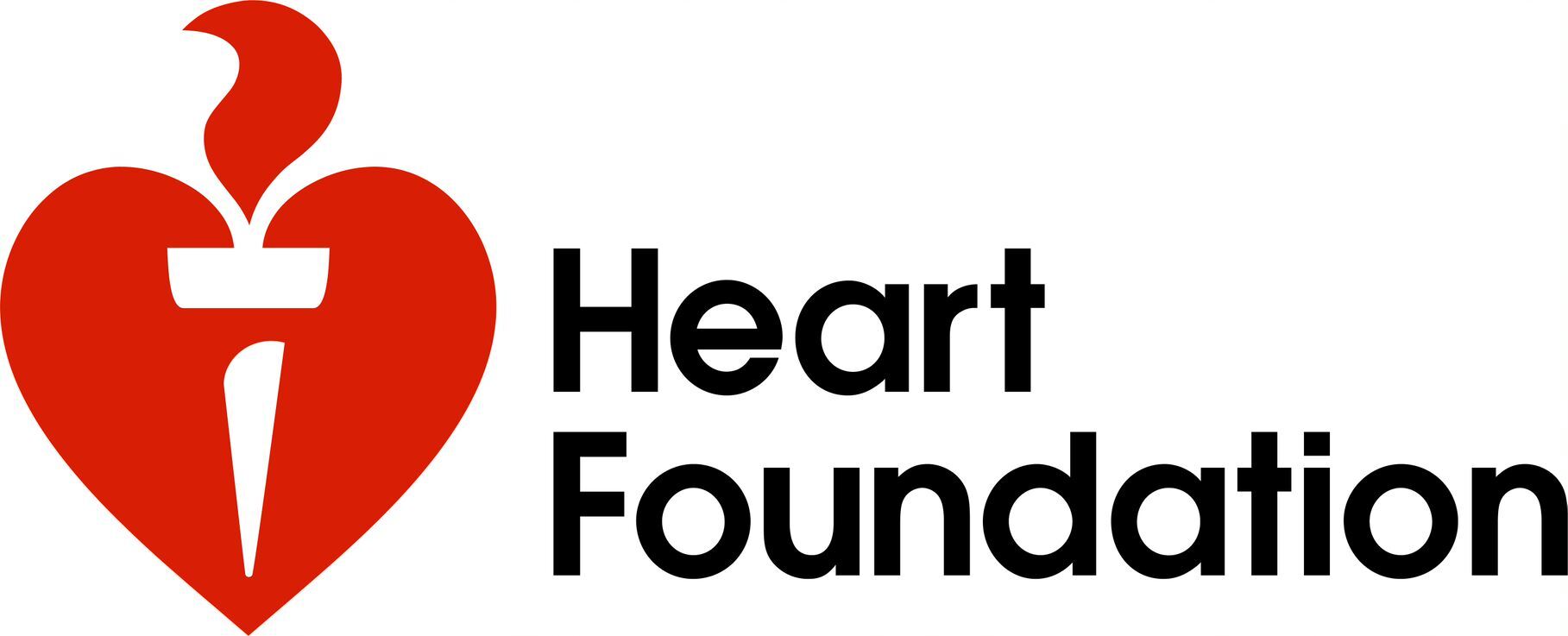Heart failure

The NPS MedicineWise program on heart failure has been developed in collaboration with the National Heart Foundation of Australia.
Heart failure in Australia
Heart failure is a complex clinical syndrome1 affecting 480,000 Australians, and the burden of illness is expected to increase with the ageing population.2 The prognosis is poor, and only 50% of people with heart failure are alive 5 years after diagnosis.3
Early diagnosis of heart failure and effective management keeps people out of hospital and helps them live better, longer lives.1
Hospital admissions
In 2018–19, there were 65,177 hospital admissions for heart failure in Australia.4 People with heart failure are often readmitted to hospital.2 One study reported that 30 days after discharge from hospital with heart failure, the all-cause readmission rate was one in five (20%) and there was 8% mortality.5 Furthermore, there are higher rates of hospitalisation in remote areas, low socioeconomic areas and among Aboriginal and Torres Strait Islander peoples.6 Patients who have been hospitalised with heart failure should be reviewed by their GP, cardiologist and, where possible, a heart failure nurse within 7–14 days of discharge to improve outcomes.1
Classification of heart failure
Generally heart failure is classified as:
- heart failure with reduced ejection fraction (HFrEF) with LVEF below 50%
- heart failure with preserved ejection fraction (HFpEF) with LVEF greater than or equal to 50%.
Full definitions and further details about the diagnosis and classification of heart failure can be found in the Clinical Guidelines for the Prevention, Detection, and Management of Heart Failure in Australia 2018.1
An echocardiogram is the most important investigation to confirm the diagnosis, classify type of heart failure and guide management.1 The classification of heart failure and ejection fraction recorded in the clinical information system can be used to inform management.
Management of heart failure
Australian guidelines recommend pharmacological management of HFrEF with medicines, based on a strong body of evidence that medicines reduce mortality. The management of HFpEF differs from the management of HFrEF. Comorbidities should be identified and managed in the context of heart failure.1
Lifesaving medicines for patients with HFrEF are available
Patients with HFrEF should be prescribed a combination of:
- an angiotensin-converting enzyme (ACE) inhibitor, or if not tolerated an angiotensin receptor blocker (ARB) and
- a heart failure beta blocker and
- a mineralocorticoid receptor antagonist (MRA).
All of these should be up-titrated to target or maximum tolerated doses, which have been shown to reduce hospitalisation and improve survival.1
Education and multidisciplinary support improve outcomes and quality of life
Multidisciplinary heart failure disease management programs, cardiac rehabilitation, nurse-led medicine titration, patient and carer self-management education, and exercise training have also all been shown to improve health outcomes and quality of life for patients with heart failure.1 Vaccinating patients with heart failure against influenza and pneumococcal disease may have a protective effect to reduce their increased risk of respiratory infection – a major cause of decompensation.1
Guidelines
|
Authors |
Title |
Description |
|
|
The National Heart Foundation of Australia and the Cardiac Society of Australia and New Zealand |
Provides guidance for health professionals across all disciplines, including in primary care, on clinical care for people living with heart failure based on current evidence and informed by other international guidelines and local clinical expertise. |
||
|
National Heart Foundation of Australia and the Cardiac Society of Australia and New Zealand guidelines are ‘best practice standards’ but for additional reading, here are the NSW Agency and the Therapeutic Guidelines |
|||
|
NSW Agency for Clinical Innovation (ACI) |
Agency for Clinical Innovation NSW Clinical Service Framework for Chronic Heart Failure 2016 |
Provides nine evidence-based standards for clinicians across a range of community and hospital settings to provide best-practice care in the prevention, diagnosis and management of chronic heart failure. Includes guidance across the continuum of care for Primary Health Networks general practices, Local Health Districts hospitals, Aboriginal Community Controlled Health Services Aboriginal Medical Services and community health services. |
|
|
Therapeutic Guidelines Heart failure |
Cardiovascular Expert Group. Heart failure. East Melbourne: Therapeutic Guidelines Ltd 2018 |
Developed by an Expert Group for Cardiovascular to provide guidance for health professionals across all disciplines, including in primary care, on clinical care for people living with heart failure, based on current evidence and clinical expertise in the context of Australia. |
|
References
- Atherton JJ, Sindone A, De Pasquale CG, et al. National Heart Foundation of Australia and Cardiac Society of Australia and New Zealand: Guidelines for the prevention, detection, and management of heart failure in Australia 2018. Heart Lung Circ 2018;27:1123-208.
- Chan YK, Tuttle C, Ball J, et al. Current and projected burden of heart failure in the Australian adult population: a substantive but still ill-defined major health issue. BMC Health Serv Res 2016;16:501.
- National Heart Foundation of Australia. Clinical fact sheet - diagnosis and classification of heart failure. Sydney: NHF, 2019 (accessed 22 April 2020).
- Australian Government. Australian Institute of Health and Welfare National morbidity database hospitalisations 2018-19. Canberra: AIHW, 2020 (accessed 22 April 2021).
- Al-Omary MS, Davies AJ, Evans TJ, et al. Mortality and readmission following hospitalisation for heart failure in Australia: A systematic review and meta-analysis. Heart Lung Circ 2018;27:917-27.
- Australian Commission on Safety and Quality in Healthcare. Second Australian atlas of healthcare variation Sydney: ACSQH, 2017 (accessed 20 April 2020).
Improvement measures
Improvement measures can be used as part of practice quality improvement to:
- review the care of patients with heart failure
- reflect on whole-of-practice management of heart failure and identify opportunities to improve workflow, policy and procedures for future care.
Improvement measures recommended for the care of patients with heart failure are:
For diagnosis and classification of heart failure
- Proportion of patients with heart failure who have an echocardiogram recorded (ever)
- Proportion of patients with heart failure who have classification of heart failure recorded (ever): reduced ejection fraction (HFrEF) or preserved ejection fraction (HFpEF)
For pharmacological management of HFrEF
- Proportion of patients with HFrEF currently prescribed an ACE inhibitor, ARB or ARNIa
- Proportion of patients with HFrEF currently prescribed a heart failure beta blockerb
- Proportion of patients with HFrEF currently prescribed an MRAc
- Proportion of patients with HFrEF currently prescribed the combination of an ACE inhibitor, ARB or ARNI + heart failure beta blocker + MRA
- Proportion of patients with HFrEF currently prescribed target dose of an ACE inhibitor, ARB or ARNI following 6 months commencement of medicined
- Proportion of patients with HFrEF currently prescribed target dose of a heart failure beta blocker following 6 months commencement of medicined
For management of heart failure
- Proportion of patients with heart failure reviewed within 2 weeks following hospital discharge
- Proportion of patients with heart failure who have a general practitioner management plan (GPMP) or Team Care Arrangement (TCA) or Coordinated Veterans Care (CVC) program developed or reviewed in the last 12 monthse
- Proportion of patients with heart failure who have been referred for a Home Medicines Review (HMR) or Residential Medication Management Review (RMMR) in the last 12 monthsf
- Proportion of patients with heart failure vaccinated against influenza disease in the last 12 months
- Proportion of patients with heart failure vaccinated against pneumococcal disease (ever)
- Proportion of patients with heart failure currently prescribed medicines that can worsen heart failureg
a. ACE inhibitor: angiotensin-converting enzyme inhibitor, ARB: angiotensin receptor blocker, ARNI: angiotensin receptor neprilysin inhibitor
b. Heart failure beta blocker: bisoprolol, carvedilol, nebivolol, metoprolol extended release
c. MRA: mineralocorticoid receptor antagonist: aldosterone or eplerenone
d. Some patients may not tolerate up-titration to target dose
e. MBS item codes for GPMP or TCA or CVC program:721, 723, 732, 229, 230, 233, 92055, 92024,92025,92028,92056,92059,92099,92068,92069,92072,92100,92103, UP01, UP02, UP03, UP04
f. MBS item codes for HMRs and RMMRs: 900-093
g. Medicines that can worsen heart failure (note this is not an exhaustive list): (non-steroidal anti-inflammatory drugs or cyclo-oxygenase inhibitors, diltiazem or verapamil, oral corticosteroids and tricyclic antidepressants
For health professionals
Clinical resources and tools
Heart Foundation
- Clinical fact sheet: diagnosis and classification of heart failure
This resource covers making a clinical diagnosis and classifying heart failure according to left ventricular ejection fraction (LVEF). - Clinical fact sheet: pharmacological management of chronic heart failure with reduced left ventricular ejection fraction (HFrEF)
This resource provides an algorithm for the management of heart failure with reduced ejection fraction (HFrEF). It includes information about how to start and optimise pharmacological treatments for patients with HFrEF.
Veterans’ Mates
- Therapeutic Brief: Taking steps to live well with heart failure November 2020
This article provides information on optimising heart failure medicines, the importance of early follow-up after hospital discharge and partnering with their DVA Veteran patients/carers.
Queensland Health
- Heart Failure Medication Titration Plan
This plan provides monitoring recommendations, information on medicines up-titration, a problem-solving guide and a printable plan to use with patients

